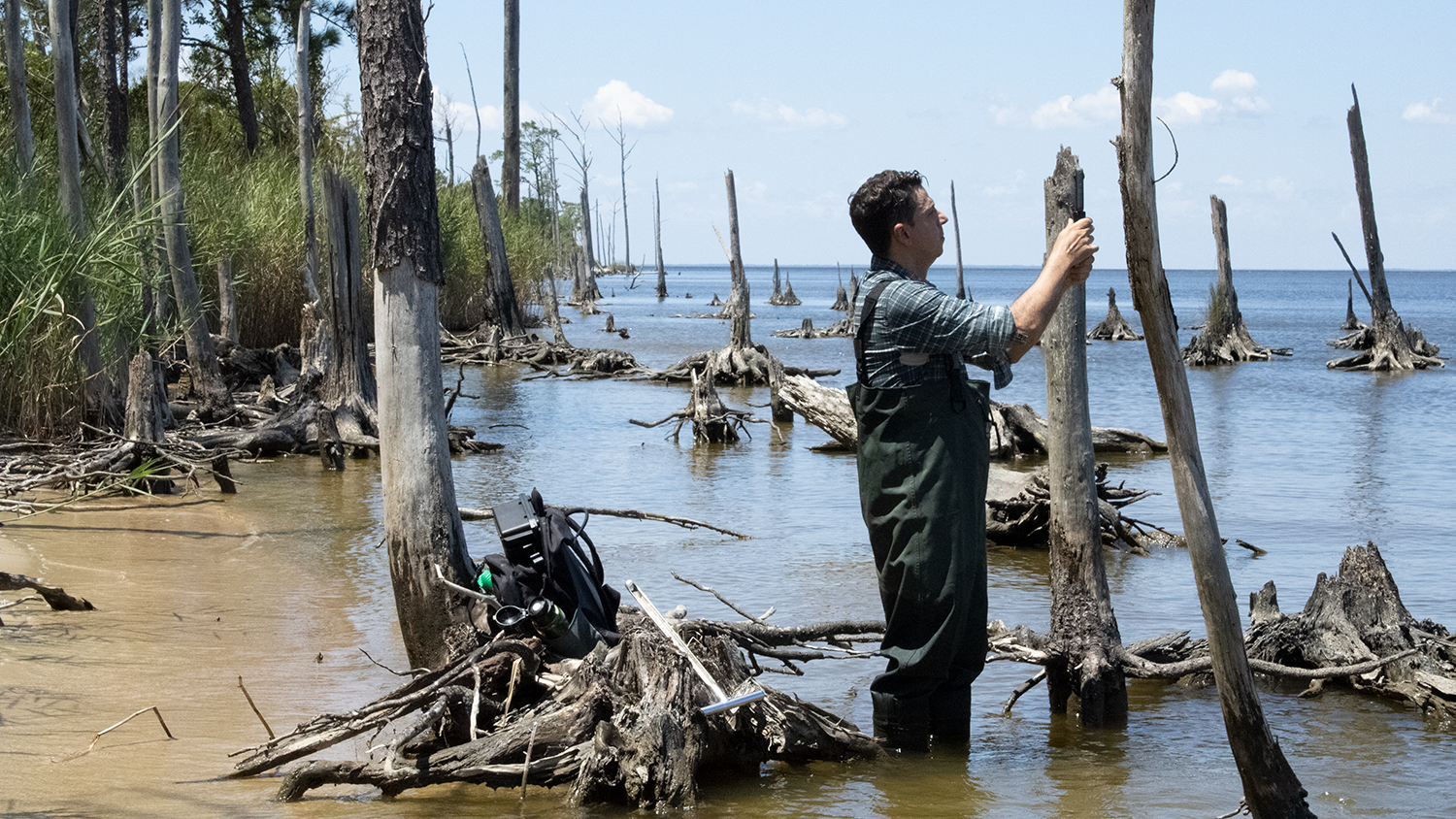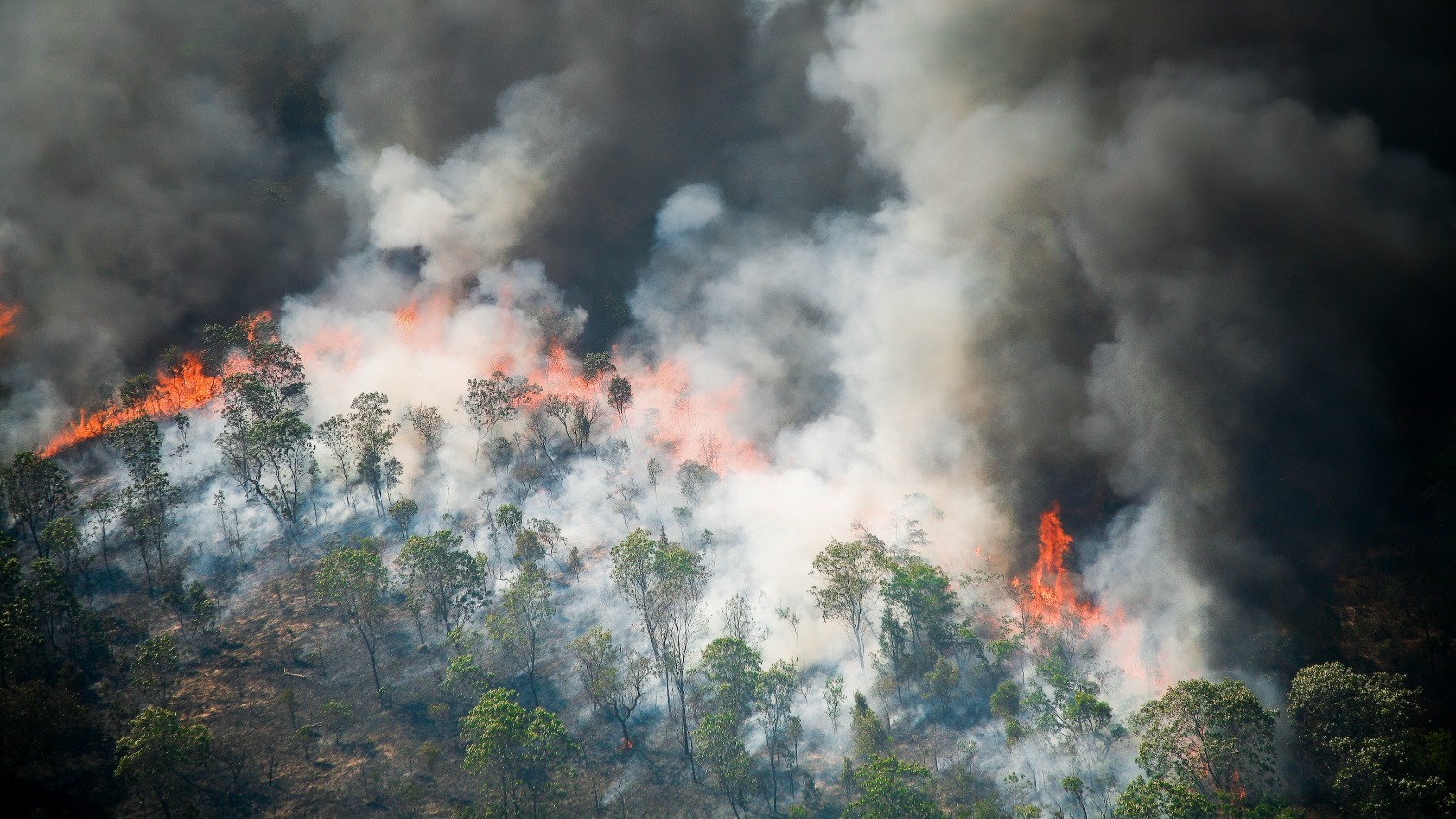Ask an Expert: What Are Ghost Forests?
NC State's Marcelo Ardón discusses the emergence and spread of ghost forests along the Atlantic Coast.

Throughout the Albemarle-Pamlico Peninsula of North Carolina, large patches of dead trees now appear in numerous wetlands and upland forests. It’s a stark contrast to the hardwoods and evergreens that once thrived in these ecosystems.
Scientists call these patches of dead trees “ghost forests” — and they’re expected to become an even more common sight in North Carolina and other states along the Atlantic Coast as climate change accelerates.
“Forested wetlands and upland forests are changing into marshes due to increased saltwater intrusion and more frequent flooding,” said Marcelo Ardón, a professor of forestry and environmental resources at NC State.
Rising sea levels and frequent flooding, fueled by climate change, inject saltwater into wetlands and forests, according to Ardón. The saltwater gradually overtakes the freshwater, which trees rely upon for sustenance.
“As these ecosystems turn into marshes, the trees lose their leaves, lose their bark, and can remain standing for up to a decade. The standing dead trees are eerie looking from a distance, and thus that is where the term ‘ghost forest’ comes from,” Ardón said.
Ardón, whose research focuses on the biogeochemistry of wetlands and streams, is on the forefront of efforts to track the spread of ghost forests. We recently spoke with him to discuss the origins of ghost forests and their potential impact on the environment.
When did ghost forests initially emerge?
Ardón: The oldest record I have found in the scientific literature of the term “ghost forest” is from the 1920s. But ghost forests have been created and changed to other ecosystems for a very long time. Over geological time periods, as sea level rose and receded due to ice ages, forests and marshes danced up and down the coast, creating and destroying ghost forests. The difference today is that sea levels are rising much faster than in the past, we have more droughts and storms, and we have created a lot of infrastructure that prevents the movement of ecosystems. Most studies agree that there has been an acceleration of ghost forest creation in the last two decades.
Where are ghost forests occurring outside of North Carolina?
Ardón: Ghost forests are occurring all along the Atlantic Coast, from New Jersey to Texas. There is also some evidence that ghost forests are becoming more common along the Pacific Coast, but given that the elevation changes much faster in the Pacific, ghost forests do not appear to be as prevalent there. There are reports of ghost forests in Alaska, though the mechanism that created them in Alaska might be different than what has been observed in the Atlantic Coast.
What role has climate change had in the emergence of ghost forests?
Ardón: Increasing sea levels, increasing saltwater intrusion, and stronger storms have all contributed to the emergence and spread of ghost forests. We have found that in years when there is a drought, followed by a hurricane, those are the years with the largest increase in the creation of new ghost forests. There is something about the combination of drought and large storms that seems to precipitate large tree mortality.
We know that human activities have led to increased sea levels, approximately four inches since 1993. Predictions are that sea levels might rise by 39 inches by 2100. That will cause significant flooding and changes to our coast. But the ghost forests we see now are a product of those four inches, and more are likely coming.
However, while ghost forests are an indication that climate change is affecting ecosystems now, they are not an indication that it is too late. The fact that marshes can come in and replace forests is a good reminder of the resilience of nature — and that we can change our actions to avoid the worst impacts of climate change.
How do ghost forests impact the environment?
Ardón: One of our studies examined whether standing dead trees in ghost forests help to move greenhouse gasses, created by microbes in the soil, to the atmosphere. We were interested in asking if the dead trees were functioning as straws, facilitating the movement of gasses to the atmosphere, or as corks, keeping the gasses in the soil. We found that the dead trees functioned a little like both, a straw and a cork. The standing dead trees allowed the movement of some greenhouse gasses, particularly carbon dioxide and nitrous oxide. But the standing dead trees also decreased the emissions of methane, which is a potent greenhouse gas. These results suggested that the standing dead trees in ghost forests were functioning as filtered straws.
We also conducted a study looking at carbon sequestration in ghost forests. Wetlands are very good at sequestering carbon, but there is some concern that losing forested wetlands could lead to the loss of that important ecosystem service. On the other hand, some studies have suggested that marshes are better at sequestering carbon than forested wetlands. So the creation of ghost forests and transition to marshes could be a good thing. We found that in North Carolina ghost forests and forests sequester more carbon than marshes. This was different from what had been found in Georgia and South Carolina, where marshes were better at sequestering carbon. These results suggest that the impact of ghost forest formation might differ depending on where you are.
Can ghost forests be restored to healthy ecosystems?
Ardón: In the short term, there might be actions that we can implement to slow the creation of ghost forests or restore wetlands to protect further degradation in coastal ecosystems. One of the avenues of research we have explored in my lab group is to map the trajectory of ghost forest formation across the Albemarle-Pamlico Peninsula of North Carolina. This is an area where we know many ghost forests have formed recently. In fact, we know that an area the size of Washington, D.C. turned from forests into ghost forests in the last thirty years.
We find that by mapping the trajectory we can identify areas that might be too far along in the transformation to a ghost forest, as well as the areas that are just starting to transform. Using water control structures, planting salt and flood tolerant species, and trying to raise soil elevation, some of these areas might be protected in the short-to-medium term (20-30 years). Unfortunately, many of the low lying coastal forests might not be able to survive in the long term (100 + years) due to increased salinity and flooding due to sea level rise.


